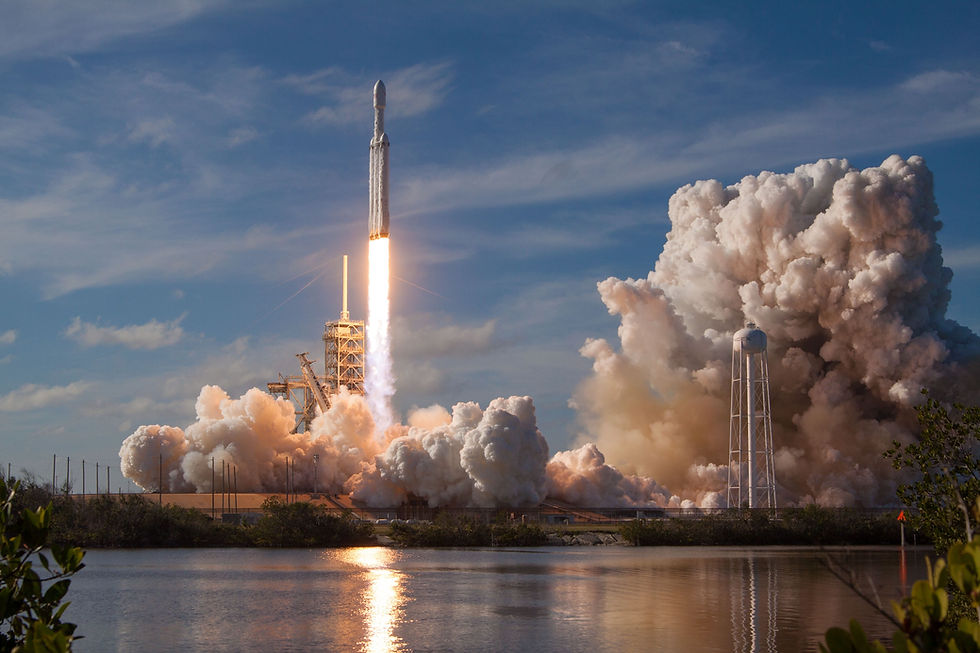What’s Stopping Renewable Energy Sources from Taking Over?
- Oxbridge Intelligence

- Aug 26, 2020
- 3 min read
By Nasser Chowdhury - Engineering Student @ St John's College, Cambridge
There has been a meteoric rise in the use of renewables since the turn of the century all around the world as we try to mitigate the effects of climate change. However, this has not been fast enough, and we are on track to surpass 2°C global temperature rise that will have catastrophic consequences. The good news is most countries have agreed to cut down their carbon emissions through the Paris agreement and the most effective way these countries can do this is by reducing the energy-related carbon emissions (which account for 75% of the world’s emissions according to UNEP). Switching to renewable energy then, seems like the best way forward but this is a monumental task with numerous challenges as I’ll explain in this article.
The recent rise in renewables has resulted from the rising coverage and acceptance of climate change within the media and the general public. However, the giant fossil fuel industry, which stands to lose a lot from the rapid rise in renewable energy, has led climate disinformation campaigns and have used their immense lobbying power to keep their market share. Despite countless studies proving the existence of climate change, this issue is now a contested one by governments around the world. Exemplified by the USA’s withdrawal from the Paris Climate Accords by Donald Trump which means that America, the second biggest polluter in the world which emits over 5.1 billion tons of CO2 every year (15% of the global total), does not have to stick to any CO2 reduction targets.
One of the misconceptions about renewable energy is that it’s very expensive; whilst it may cost more than coal, oil and gas, there is much evidence to show that the costs to implement and run renewable energy stations are decreasing rapidly due the huge advancements in renewable technologies made recently. For example, between 2006 and 2016, the average value of photovoltaic modules themselves plunged from $3.50/watt to $0.72/watt — an 80 percent decrease in only 10 years. There are similar reductions in costs for wind power and biofuels as recycling becomes more prevalent. This may mean that in the near future, renewable energy may become cheaper than coal, oil and gas when their supplies inevitably start to dwindle.
There are also misconceptions about reliability; you wouldn’t be wrong in thinking that renewable energies rely heavily on nature and nature can be very unreliable at the most inconvenient of times. This is compared to the more 'dependable' fossil fuels which produce energy on demand. However, solar and wind power are highly predictable when spread across a large enough geographic area and, when used alongside a small “baseload” (continuous) power provided by fossil fuels, this combined energy supply can be used at peak and off-peak times. In addition, different renewable energy resources can be constructed to complement each other e.g. when there's no hydroelectric then at least there’s solar (during a drought) and vice versa.
Another convenience about non-renewable energy sources like nuclear, gas and coal is that they are all centralised power sources, so they produce a lot of power from relatively few high output power plants. Wind and solar power, however, have a decentralised model which combine many different small generating stations over a large area (e.g. it would take 600 wind turbines to replace one coal power plant), and this presents a few barriers including siting and transmission. Siting is the need to find locations for the small generating stations which require a lot of land, and this often includes contracts, permits and negotiations. These are very time-consuming and expensive and can sometimes derail large scale renewable energy projects. Transmission refers to the problem of having to add a lot of infrastructure and power lines for the relatively new power sources as today’s infrastructure was largely built to transmit fossil fuel power. A solution to this would be to put the small generating stations near to the large-scale power plants or just using power from renewable energy sources to power local towns.
We have made so much progress over the past few decades, however, to reach the UK’s target of being carbon neutral by 2050, we have a huge challenge ahead of us. As of 24th August 2020, 28% of the UK’s energy was produced from renewable sources and this number is only going to go up. It is now up to governments, the energy industry and us as individuals to help push the change to renewable energy.
Further reading:
Shere, J. (2013) Renewable: The World Changing Power of Alternative Energy
Hawken, P. (2017) Drawdown: The Most Comprehensive Plan Ever Proposed to Reverse Global Warming
https://www.ucsusa.org/clean-energy/renewable-energy/barriers-to-renewable-energy#.XCU7fs_7TpA
https://www.linkedin.com/pulse/advantages-disadvantages-renewable-energy-ashraf-mahmoud
https://www.vox.com/energy-and-environment/2018/7/13/17551878/natural-gas-markets-renewable-energy





Construction refers to Read this the process of building or creating something, typically a physical structure like a building, road, or bridge. It involves planning, design, and the execution of that plan by various skilled workers and contractors. Construction projects range in scale from small residential homes to large infrastructure projects like roads and bridges.